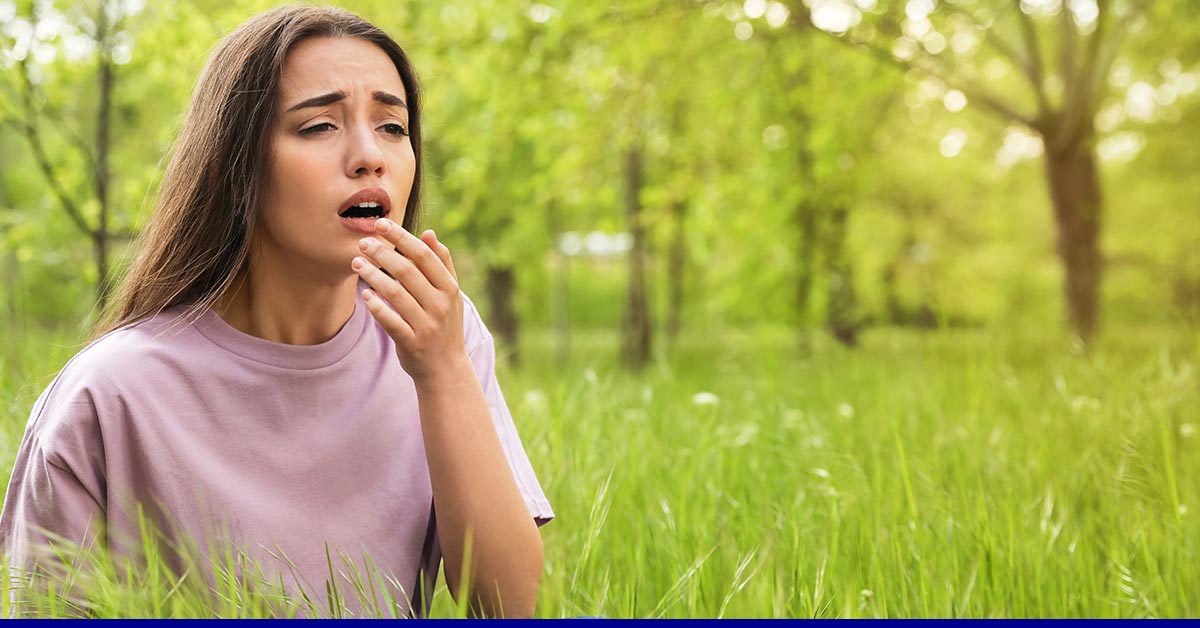
Spring and summer seasons bode sunny days with healthy vegetation all around. For some, however, these seasons can cause excessive sneezing, watering eyes, and itchy noses. Seasonal allergies affect 24 million people in the US, most of which are grass and weed pollen allergies. If you step outside during summertime and feel like sneezing excessively, you might have a grass allergy.
An allergy is a hypersensitivity type 1 reaction in which the body overreacts to a normally inconsequential foreign particle in the body. If you are allergic to dust or pollen, you might experience an exaggerated bodily reaction such as sneezing, coughing, and conjunctivitis on exposure to the particle.
Like all plants, grasses need to reproduce. Most grasses produce fine pollen dust that disperses in the air for further propagation. Grasses reproduce seasonally and are one of the most common worldwide allergies and affect 1 to 3 out of ten children and adults in the US.
There are over a thousand types of grasses in North America, but some are more allergenic than others. Common grasses around you that cause grass allergies are blue grass, Bahia, Timothy grass, Bermuda, rye, and Johnson grass. You may be allergic to one or more of these grasses and since they bloom in different seasons, your allergies may act up either during specific seasons or year-round.

Exposure to grass pollen can cause symptoms that are typical of many allergic reactions. This type of reaction is also referred to as hay fever of allergic rhinitis and may manifest as:
If you face these symptoms often, you might want to keep a tracking diary to help your physician diagnose your allergy. A review of symptoms is sufficient to diagnose the nature of your allergy.
Your allergist may also order a skin prick test to properly determine the allergen that you are allergic to. A small amount of allergen is placed on the skin which is then pricked to allow the particle to invade your skin. A raised welt within 15 minutes at the site of injection indicates an allergy to that strain of grass.
Although there is no cure for allergies presently, you can treat your grass allergy symptoms and manage your condition by minimizing exposure.
Several over-the-counter (OTC) drugs are available to manage grass pollen allergy symptoms.
These corticosteroid sprays reduce inflammation and reduce nasal swelling. These sprays are most effective for allergic rhinitis and can relieve symptoms like nasal congestion, runny nose, sneezing, and itching.
Since histamine is the primary vasodilator causing an inflammatory reaction, using antihistamines is an effective method to prevent and treat grass allergy symptoms. Antihistamines are available as pills, syrups, and nasal sprays. You can take antihistamines before leaving the house on the days when the pollen count is higher than normal or during grass pollinating months.
Decongestants relieve symptoms like stuffy nose and sinus by shrinking the nasal lining. However, these should only be used for less than three days as a rebound effect has been noted with prolonged usage.
For long-term immunization to allergens, you can opt for subcutaneous or sublingual immunotherapy. In the subcutaneous alternative, a series of allergy shots are administered with increasing dosage of allergen. This helps improve the immune system and reduce inflammatory symptoms over the years.
In sublingual immunotherapy, an allergen tablet is placed under the tongue for two minutes and then swallowed. In 2014, the Food and Drug Administration (FDA) approved GRASTEK and Oralair tablets to treat grass allergies. You can take these tablets daily during the grass season.
Grasses usually pollinate during summers. There is a higher chance of being exposed to grass pollen on dry, hot, and windy days. You may keep your allergen-safe lawn well-manicured, but grass pollen can be carried for miles by the wind. Most of these grasses grow all over the continent. The following are some common allergenic grasses with their pollination seasons:
In 2022, Lancaster, PA, and Hartford, CT are ranked as the worst areas for grass allergies this summer, with allergy risk ranks of 19 and 10 respectively. If you plan on traveling interstate, especially through grasslands, you should review the allergy risk ranks for the cities you plan to visit.
An interesting consequence of grass allergy is pollen food allergy syndrome (PFAS). If you have a grass allergy, you may notice that when you eat certain fruits, you experience allergic symptoms in or around your mouth. This is because grass pollen is composed of proteins that are similar to proteins present in some fruits. Our bodies cannot differentiate between the two and exposure to fruit protein also elicits an allergic response from the immune system. You may experience itching in your throat and mouth or swelling of the lips or throat.
Timothy and orchard grass are commonly cross-reactive grasses. If you are allergic to these grasses, PFAS can be triggered when you eat:
However, that does not mean you should cut these foods out of your diet. Heating and cooking fruits denature the protein and render it ineffective as an allergen. Therefore, you may not want to eat a raw tomato, but you can eat cooked marinara sauce or ketchup without experiencing unpleasant consequences.
See Also: Peanut Allergy Fatal?
A grass allergy is not fatal, though it can be a nuisance due to the widespread growth of grass over the US. You can use a wide array of treatment options to manage your grass allergy symptoms or look into long-term immunotherapy if your allergies are too bothersome.
If you feel allergic symptoms year-round, Family Medicine Austin offers diagnostic and treatment services to find out exactly which allergy you may have. To learn more about allergies, check out our blog post on allergic rhinitis